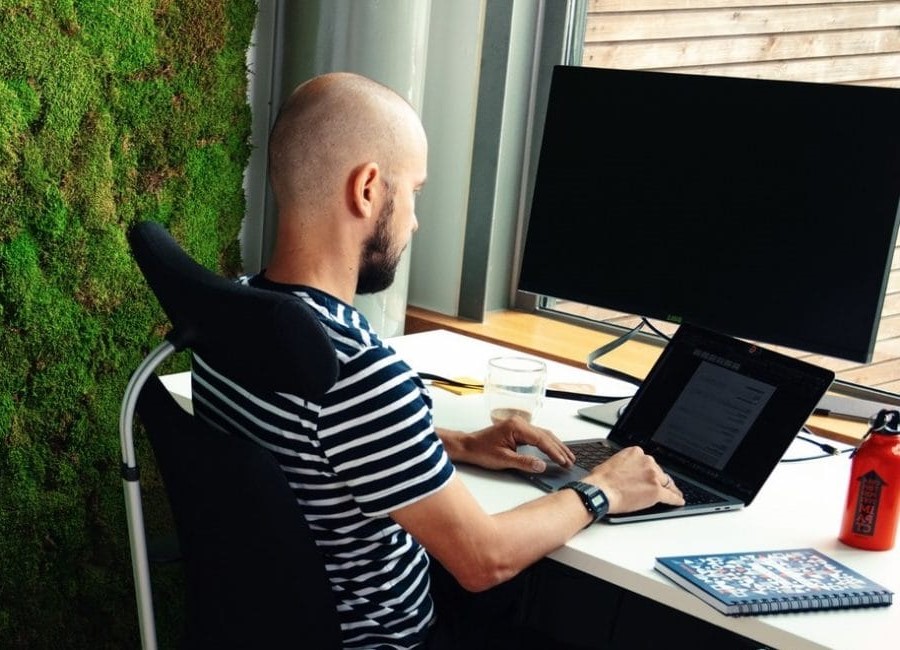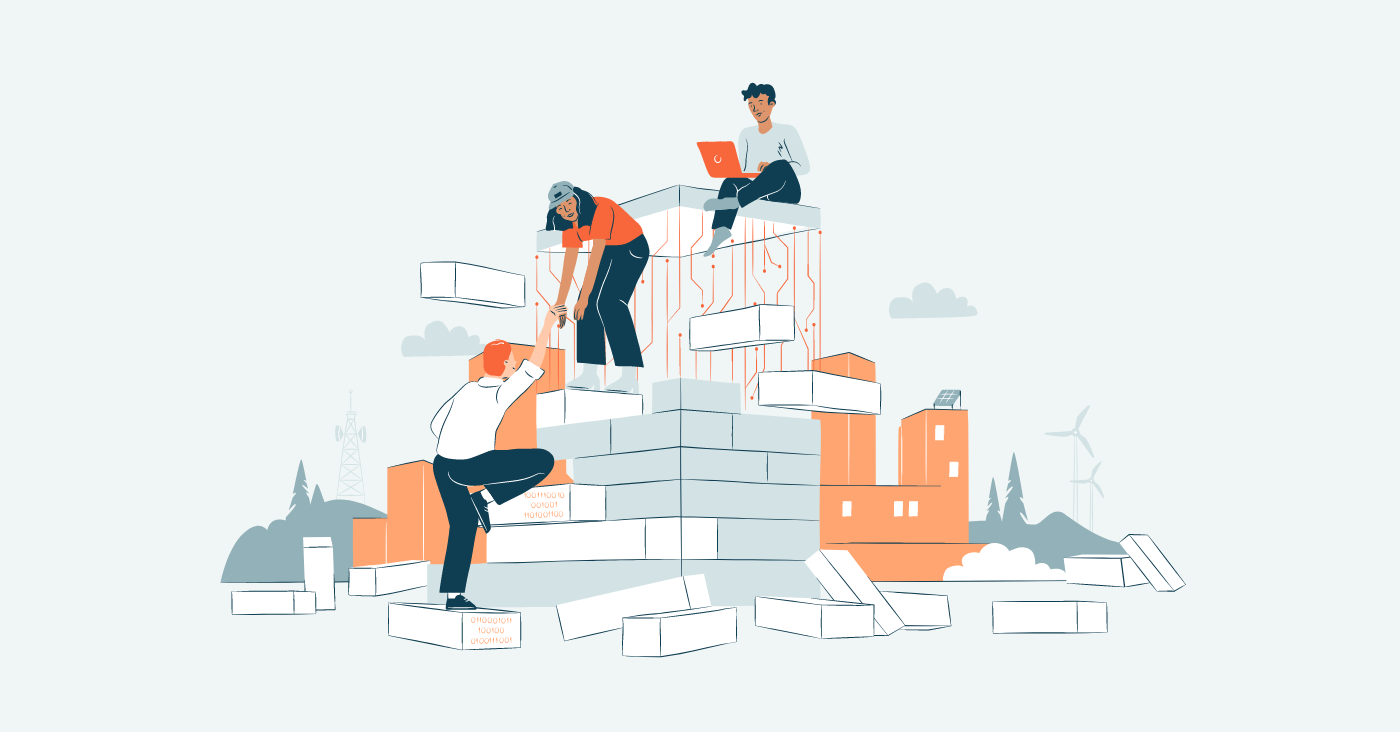Nowadays, consumers are conscious. The trend is that people are increasingly buying from companies whose values they appreciate. Being ethical and doing ethical choices is affecting people’s behavior more and more.
But are companies ready for this? Companies should reflect on society and align their business with the change that is happening in the world right now. They should understand that when products and services are being designed, values and ethics should be used in the decision-making. This is something we should think about also in our own work, as designers, developers, specialists, and leaders. Sami is writing in his text that we need to understand the complexities of the impact that digital services have on society. Only then we can use design to minimize the negative impacts and set society-level goals to maximize the positive ones.
This is where company values, ethics and global sustainability goals come into the picture. Good Growth’s model and Design for Everyone toolkit provides concrete actions and tools, so that we can help our clients into the right direction.
Differentiating by being ethical
As Anton describes in his text, Good Growth – three reasons why the younger generations demand sustainability, while older generations are fighting with their guilt. When you look at the markets, doing responsible business is already expected, but being seen as an ethical company is the way to differentiate. Gofore’s brand promise states that we are the pioneers of ethical digital, in this blog post I will present how to make this concrete via a case example.
But what does ‘being ethical’ mean in practice? For me, as a designer I view my projects and my clients from the design perspective.
Here are few points from design perspective, the goals of Design for Everyone:
- Increasing awareness of ethical decision making
- Mindset of being ethical – understanding the human side of our business
- Responsibility as a designer – in the process and in the outcome
- Doing ethical and inclusive design. Recognizing marginal and diverse groups, as well as biases (we all have those, whether you like it or not)
- Predicting the future and where society is going – helping our clients to adapt
Customer project example
Few months ago, we started a project with a client, who had some ethical concerns. This was one of our first Good Growth projects, where we used the Good Growth model and the Design for Everyone toolkit. We arranged a workshop with them around values, ethics and sustainability. The aim was to increase the awareness of ethical decision making in product business. We also used the UN’s Sustainable Development Goals in action, I will shortly tell you how. But first some background of why the customer wanted our help.


The client works within healthcare with plans on going international. They were pondering whether their product will be used as expected in new unknown market areas or whether it could even be used to cause harm for some groups of people. It can be a bit of a mystery, how business is done in a culture that differs a lot from ours. So, what direction should they take? Is it better to be safe and not scale the business or be brave and hope that everything goes well? How could their company values guide them in doing ethical and sustainable decisions?
Ethical discussions can be challenging, as there often is no clear answer of right or wrong. However, what one can do is to systematically consider the possible risks and the possible positive impact and look at the big picture. We helped the client to facilitate this discussion and bring it into global context. In our client’s case another important aspect was that they want to be a purpose driven company, they want their employees to get motivated by this.
United Nation’s Sustainable Development Goals in action
When doing Good Growth projects, one approach is to look into ´making an impact’ in the light of the United Nations Sustainable development goals. These 17 goals are universal and aimed at achieving a better and more sustainable future for all. They address the global challenges. They are dealing with issues such as inequality, extreme poverty and environmental catastrophes. This is the standard that companies are already measured by.
Our Design for Everyone toolkit gives practical tools to address these questions. The SDGs should guide the work of governments and companies, globally. But they can also guide our work, when we want to design and develop sustainable services and products. Some companies are already using the SDGs and they have selected their goals for their future and for example listed them on their websites. But there are also many smaller or medium-sized companies, also within our clients, who have not thought about SDGs or ethics in decision making. When we come across client’s who have not thought about this at all, maybe we are the ones who should be asking these questions?
Now, let’s go back to the client case. We had around 10 participants from different roles attending the workshop. The first part of the agenda was about ethical design and the values of the client and the second part was about expanding their thinking into the global context – there we used SDGs to help in the evaluation.
The participants were asked to look at the SDGs and think about their product’s societal impact. They selected 6 goals out of 17: goal 3 Good health and well-being, goal 4 Quality education, goal 8 Decent work and economic growth, goal 9 Industry innovation and infrastructure, goal 16 Peace, justice and strong institutions and goal 17 Partnerships for the goals. Everyone voted for the goals individually, they could select as many as they wanted.
After the goals were selected, we took also Good Growth lenses along: people, business and nature. The participants were asked to write down the impact or consequences the selected SDGs would have within these lenses. This led us to a more in-depth discussion about what this means when going international to new market areas. The SDGs worked pretty well as a reference point, and as the UN is behind them, they are credible as well.
So, what was the outcome of this workshop? And what was the value for us? For the client this was a discussion starter first of all, the aim was to increase the awareness of ethics, values and societal impact. Also, for the employees to find motivation to thrive, through the purpose of the company. For us, the Good Growth team, this was a great opportunity to try out the Design for Everyone methods in practice and gain experience. Now we can iterate our tools to work even better in the next projects. And now it is also easier to tell about Good Growth projects to you all, with a real reference case.
Do you think your company could need a workshop like this? Please contact our team and we would be happy to help out!
This is the fourth blog text of Good Growth’s Design for Everyone series, make sure to read also Anton’s blog post Resetting the role of Design, Sami’s recent blog post about designing with a societal state of mind and Michelle’s blog post Grounding digitalization in sustainable development – I’m in! Are you?



